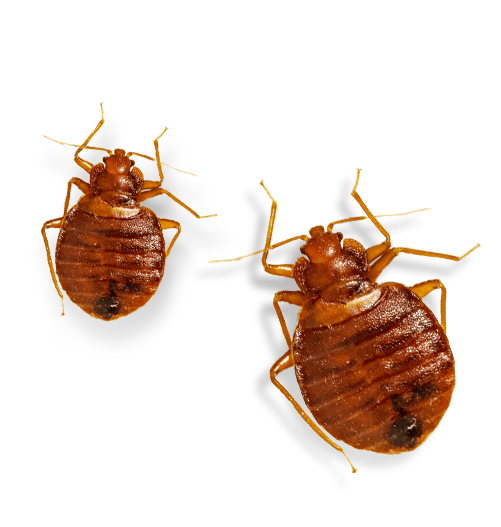A1 Bed Bug Exterminator Houston: Trustworthy Treatment Providers
Wiki Article
Comprehending the Lifecycle of Bugs for Targeted Control Strategies
Understanding the lifecycle of parasites is a basic element of reliable pest administration approaches. Via a deeper understanding of just how parasites prosper and progress, tailored control techniques can be designed to attend to specific points in their lifecycle, ultimately leading to more successful bug administration outcomes.Value of Understanding Insect Lifecycle
Recognizing the lifecycle of pests is necessary for developing efficient and targeted control techniques in bug monitoring. By understanding the different phases an insect goes with from egg to adult, parasite control professionals can recognize weak spots in the lifecycle where treatment can be most effective. For example, recognizing when larvae are most active can assist identify the optimal timing for applying larvicides. Additionally, recognizing the life expectancy of a bug varieties can assist in forecasting population growth patterns and possible invasion threats.Furthermore, identifying the particular environmental problems necessary for every phase of the pest's lifecycle can direct decisions on habitat modification or exemption techniques to interfere with the lifecycle and reduce pest populaces. This expertise allows pest monitoring experts to carry out positive steps instead of counting solely on responsive treatments, bring about more lasting and lasting pest control solutions. Eventually, a complete understanding of parasite lifecycles encourages parasite control experts to customize their techniques successfully, maximizing and minimizing environmental impacts control results.
Trick Stages in Bug Development
To properly carry out targeted control strategies in parasite administration, a critical element exists in comprehensively identifying and recognizing the essential stages in bug development. Bug growth usually is composed of a number of essential phases that are critical for their lifecycle and management.

Susceptabilities in Insect Lifecycle
Throughout the different phases of an insect's lifecycle, distinctive susceptabilities arise that can be tactically targeted for effective control procedures. One critical susceptability depends on the egg phase, where pests are often much more vulnerable to certain pesticides or biological control representatives because of their soft outer shell, making them easier targets for treatment. Additionally, the larval or nymph stage presents vulnerabilities as bugs go through fast growth and development, calling for high power intake that can be made use of by disrupting their food sources or presenting development inhibitors. Pupal stages, defined by immobility and change, provide a home window for targeted control with physical obstacles or details treatments that impede effective emergence. Adult bugs, while extra resistant due to their reproductive capacity, can still be vulnerable throughout breeding or egg-laying tasks, which can be interrupted through scent catches or sanitation techniques. Recognizing these susceptabilities in the insect lifecycle is necessary for establishing specific and reliable control strategies that effectively handle parasite populations while minimizing ecological influence.Implementing Targeted Control Steps

Executing targeted control steps generally involves a read review multi-faceted technique. This might include habitat alteration to make the atmosphere much less welcoming to insects, such as eliminating standing water for mosquito control or sealing access points for rodents. In addition, biological control techniques can be made use of, where all-natural killers or pathogens are presented to keep bug populaces in check.
Integrated Pest Monitoring (IPM) techniques that integrate numerous control steps in a coordinated and sustainable manner are usually the most efficient in attaining long-lasting parasite monitoring objectives. By implementing targeted control steps based on a comprehensive understanding of parasite lifecycles, bug populaces can be properly regulated while lessening threats to human wellness and the environment.
Boosted Pest Monitoring Practices

Additionally, the consolidation of biological control agents, such as all-natural predators or microorganisms of insects, can help in reducing dependence on chemical pesticides and promote an extra well balanced environment. Implementing physical barriers and catches can likewise belong to boosted pest monitoring techniques, offering non-toxic and targeted solutions for parasite control. In addition, using scents and various other semiochemicals can interrupt pest breeding patterns and interaction, bring about minimized parasite populations with time.
Final Thought
By identifying key phases in bug advancement and susceptabilities in their lifecycle, targeted control steps can be implemented to reduce pest populations. Enhanced pest monitoring methods can assist decrease the reliance on broad-spectrum chemicals and promote more ecologically friendly and lasting bug control techniques.Comprehending the lifecycle of insects is important for developing reliable and targeted control methods in bug management. home By understanding the different stages a parasite goes with from egg to adult, pest control experts can recognize prone factors in the lifecycle where intervention can be most successful. Ultimately, an extensive understanding of insect lifecycles encourages bug control practitioners to customize their techniques successfully, reducing environmental influences and maximizing control outcomes.
By applying targeted control steps based on a thorough understanding of insect lifecycles, insect populaces can be efficiently managed while minimizing dangers to human wellness and the environment.
By determining vital stages in insect growth and vulnerabilities in their lifecycle, targeted control steps can be carried out to minimize insect populations.
Report this wiki page